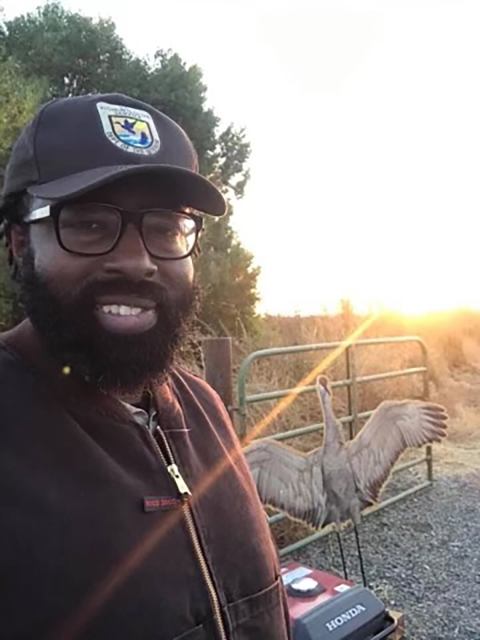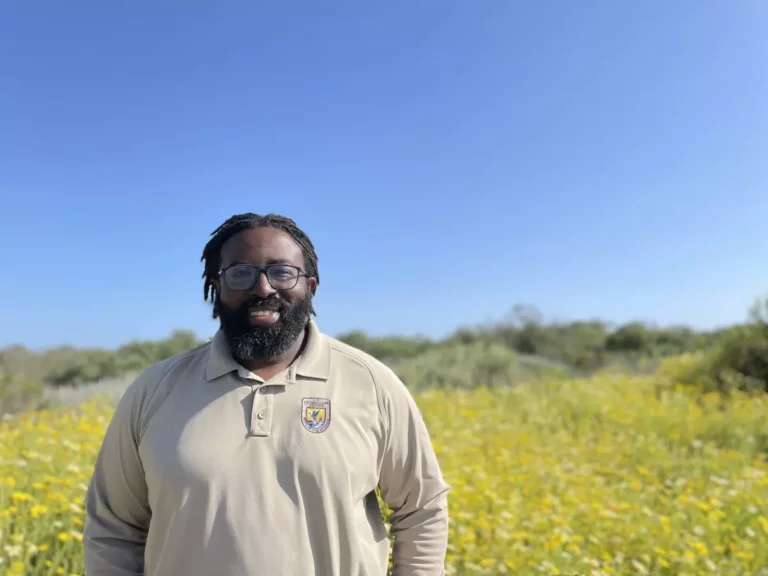Photo: Nick Stanley smiles while standing in front of a field of yellow wildflowers. Photo by Vanessa Morales, USFWS.
During his childhood summers in Fort Worth, Texas, Nicholas Stanley would regularly get woken up by his grandmother for full days of fishing. She would strap down five long cane poles on top of her minivan and drive them to wherever the fish were biting, and she and Nick would sit along the riverbank for hours until they had caught their limit before heading home to have themselves a delicious fish fry. He fondly credits his grandmother for inspiring him to fish, chase bugs, and embrace the landscapes and wildlife around him at an early age.
Following these warm memories, Nicholas, who goes by Nick, attended Grambling State University, a historically Black university in Louisiana to pursue a career working with animals. After learning about the university’s wildlife program and being taken under the wings of dedicated mentors, Stanley soared into a wildlife conservation career. This trajectory would eventually bring him into various leadership roles national wildlife refuges across the U.S. The National Wildlife Refuge System is managed by the U.S. Fish and Wildlife Service, and provides habitat for wildlife and public recreation opportunities for visitors far and wide.
Jumping in order to fly
Determined to help animals, Stanley was initially enrolled in the pre-med/veterinary program at Grambling.

One day while walking down his school’s hallways, he was intrigued by a Department of the Interior logo posted outside of the office where he learned about the school’s wildlife program. He then attended several speeches given annually by refuge manager, Pon Dixon about working for the Service. Dixon would later become one of Stanley’s greatest mentors. The decision to change his course to pursue a wildlife degree would lead him to work with some of the nation’s most spectacular wildlife from bighorn sheep and sandhill cranes to the California condor, meeting his initial goal to assist animal species in ways he never imagined.
While completing his degree, Stanley gained early experience through an internship program (now part of the Pathways Program) at Desert National Wildlife Refuge in Las Vegas. He fell in love with the National Wildlife Refuge System after seeing his first bighorn sheep there many years ago. His decision to intern paved the way toward a career with the federal government.
After graduating, he took a leap of faith and […]
Full article: www.fws.gov

